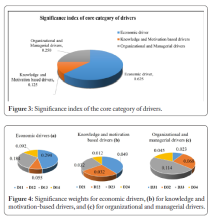Visualization and Assessment of Energy Efficiency Drivers and Solution Practices for Temperature-controlled Supply Chain Operations.
| Abstract | The higher energy consumption in temperature-controlled supply chains (cold supply chains where lower ambient temperature is required to keep the product fresh) causes a rise in financial burden and negative environmental and social impacts. As natural energy resources are limited, therefore, the necessity is to realize the significance of the driving factors responsible for higher energy efficiency in temperature-controlled supply chains. Therefore, the presented study aims to explore and analyze the driving characteristics (factors) that leverage energy efficiency in cold supply chain (CSC) operations. The research work explores 12 key drivers for higher energy efficiency in CSC based on the literature review and the opinions of the domain professionals. In addition, the research work also proposed six best effective solution practices to raise the driving characteristic of energy efficiency in CSC operations. A new hierarchical model comprised of driving factors and proposed practices has been developed and analyzed using a hybrid methodology based on the Best Worst method (BWM) and Preference Ranking Organization Method for Enrichment of Evaluation (PROMETHEE-II) methods. The BWM method has been used to analyze the significance of the driving factors while the PROMETHEE method has been used to prioritize the proposed practices for improved environmental efficiency of CSC. The discoveries of the work might help the management and decision makers to identify the core drivers and best suitable solutions |
| Faculty |
Mohit Tyagi
|
|
mohitmied@gmail.com
|
|
| More Information | DOI: 10.17756/nwj.2023-s1-128 |







